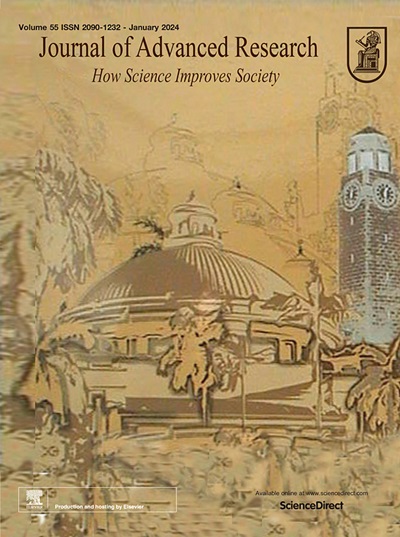Tumor necrosis factor-α-treated human adipose-derived stem cells enhance inherent radiation tolerance and alleviate in vivo radiation-induced capsular contracture
IF 11.4
1区 综合性期刊
Q1 MULTIDISCIPLINARY SCIENCES
引用次数: 0
Abstract
Introduction
Post-mastectomy radiotherapy plays a crucial role in breast cancer treatment but can lead to an inflammatory response causing soft tissue damage, particularly radiation-induced capsular contracture (RICC), impacting breast reconstruction outcomes. Adipose-derived stem cells (ADSCs), known for their regenerative potential via paracrine capacity, exhibit inherent radiotolerance. The influence of tumor necrosis factor-alpha (TNF-α) on ADSCs has been reported to enhance the paracrine effect of ADSCs, promoting wound healing by modulating inflammatory responses.
Objective
This study investigates the potential of TNF-α-treated human ADSCs (T-hASCs) on silicone implants to alleviate RICC, hypothesizing to enhance suppressive effects on RICC by modulating inflammatory responses in a radiation-exposed environment.
Methods
In vitro, T-hASCs were cultured on various surfaces to assess viability after exposure to radiation up to 20 Gy. In vivo, T-hASC and non-TNF-α-treated hASC (C-hASCs)-coated membranes were implanted in mice before radiation exposure, and an evaluation of the RICC mitigation took place 4 and 8 weeks after implantation. In addition, the growth factors released from T-hASCs were assessed.
Results
In vitro, hASCs displayed significant radiotolerance, maintaining consistent viability after exposure to 10 Gy. TNF-α treatment further enhanced radiation tolerance, as evidenced by significantly higher viability than C-hASCs at 20 Gy. In vivo, T-hASC-coated implants effectively suppressed RICC, reducing capsule thickness. T-hASCs exhibited remarkable modulation of the inflammatory response, suppressing M1 macrophage polarization while enhancing M2 polarization. The elevated secretion of vascular endothelial growth factor from T-hASCs is believed to induce macrophage polarization, potentially reducing RICC.
Conclusion
This study establishes T-hASCs as a promising strategy for ameliorating the adverse effects experienced by breast reconstruction patients after mastectomy and radiation therapy. The observed radiotolerance, anti-fibrotic effects, and immune modulation suggest the possibility of enhancing patient outcomes and quality of life. Further research and clinical trials are warranted for broader clinical uses.
经肿瘤坏死因子-α处理的人脂肪来源干细胞可增强固有辐射耐受性,缓解体内辐射诱发的囊性挛缩。
导言:乳房切除术后放疗在乳腺癌治疗中起着至关重要的作用,但可能导致炎症反应,造成软组织损伤,特别是辐射诱发的囊性挛缩(RICC),影响乳房重建的效果。众所周知,脂肪源性干细胞(ADSCs)通过旁分泌能力具有再生潜力,并表现出固有的辐射耐受性。据报道,肿瘤坏死因子-α(TNF-α)对 ADSCs 的影响可增强 ADSCs 的旁分泌效应,通过调节炎症反应促进伤口愈合:本研究探讨了硅胶植入物上经TNF-α处理的人ADSCs(T-hASCs)缓解RICC的潜力,假设通过调节辐射暴露环境中的炎症反应来增强对RICC的抑制作用:方法:在体外,T-hASCs 被培养在不同的表面,以评估暴露于 20 Gy 辐射后的存活率。在体内,将T-hASC和未经TNF-α处理的hASC(C-hASCs)涂膜在辐射前植入小鼠体内,并在植入4周和8周后评估RICC的缓解情况。此外,还对T-hASCs释放的生长因子进行了评估:结果:在体外,hASCs表现出明显的辐射耐受性,在暴露于10 Gy辐射后仍能保持稳定的存活率。TNF-α处理进一步增强了辐射耐受性,在20 Gy时,其存活率明显高于C-hASCs。在体内,涂有T-hASC的植入物能有效抑制RICC,减少囊的厚度。T-hASCs 对炎症反应有明显的调节作用,抑制了巨噬细胞的 M1 极化,同时增强了巨噬细胞的 M2 极化。T-hASCs分泌的血管内皮生长因子被认为可诱导巨噬细胞极化,从而减少RICC:这项研究证实,T-hASCs 是一种很有前景的策略,可改善乳房切除术和放疗后乳房重建患者的不良反应。观察到的放射耐受性、抗纤维化作用和免疫调节功能表明,T-hASCs 有可能提高患者的治疗效果和生活质量。为了更广泛的临床应用,还需要进一步的研究和临床试验。
本文章由计算机程序翻译,如有差异,请以英文原文为准。
求助全文
约1分钟内获得全文
求助全文
来源期刊

Journal of Advanced Research
Multidisciplinary-Multidisciplinary
CiteScore
21.60
自引率
0.90%
发文量
280
审稿时长
12 weeks
期刊介绍:
Journal of Advanced Research (J. Adv. Res.) is an applied/natural sciences, peer-reviewed journal that focuses on interdisciplinary research. The journal aims to contribute to applied research and knowledge worldwide through the publication of original and high-quality research articles in the fields of Medicine, Pharmaceutical Sciences, Dentistry, Physical Therapy, Veterinary Medicine, and Basic and Biological Sciences.
The following abstracting and indexing services cover the Journal of Advanced Research: PubMed/Medline, Essential Science Indicators, Web of Science, Scopus, PubMed Central, PubMed, Science Citation Index Expanded, Directory of Open Access Journals (DOAJ), and INSPEC.
 求助内容:
求助内容: 应助结果提醒方式:
应助结果提醒方式:


